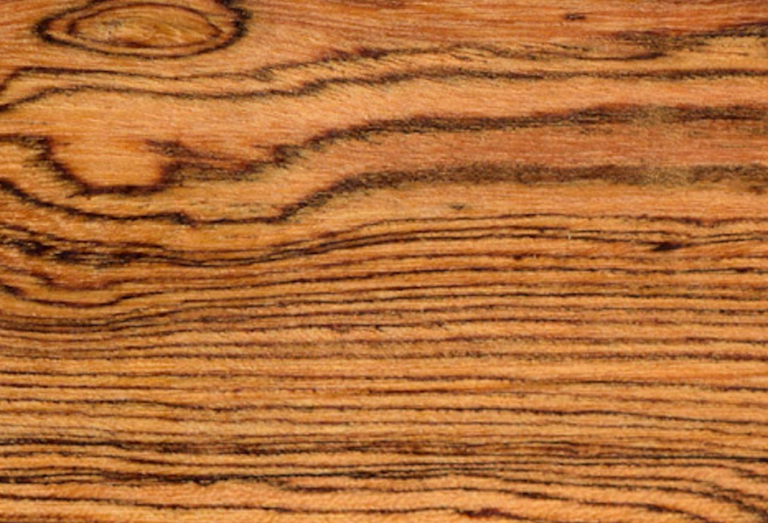BOCOTE
Laurel Negro / Cordia alliodora

Local Names
Laurel Blanco, Pardillo, Bojón, Canalete, Louro, Calzonte, Chevel, Cinchado, Corallilo, Salmwood, Suchaj, Xochicuahuitl, Nogal Cafetero, Nogal Blanco.
Distribution & Tree
The species broad range covers southern Mexico to the southern edge of the tropics in South America as well as most of the Antilles. It’s particularly abundant on the Pacific lowlands of Central America. It thrives in a variety of soils provided drainage is good, including poor, calcareous soils in foothills and along rivers. Height can vary from 18 to 36 meters with diameters from 60 to 90 cm. Bocote is a pioneer species that grows quickly when forest is disturbed.
Wood Appearance
Bocote’s heartwood varies from yellowish to brown. Light-colored material is not clearly differentiated from sapwood. Luster is medium to high often rich and golden; its texture is variable from fine to coarse and grain is usually straight to shallowly interlocked. Growth rings are delineated by narrow dark lines of pores, which show as darker colored streaks on a quartersawn (radial) surface and as wavy undulating lines on a flatsawn (tangential) surface. Small dark rays give the wood a lightly mottled appearance on quartersawn surfaces. Dark-colored specimens often have a spicy scent. It is often confused with ziricote.
Processing Properties
The wood is easy to work, finishes smoothly and glues well. It air seasons rapidly with minimal warping and checking. It turns and planes well. Bocote takes lacquer and other treatments well. Nails and screws hold well.
Strength & Durability
The heartwood is rated as durable upon exposure to both white-rot and brown-rot fungi but degree of durability appears to be related to the coloring of the wood. Also reported to have good resistance to dry-wood termites. The wood has good weathering characteristics and absorbs moisture at a moderate rate. Variable resistance to attack by marine borers.
Wood Uses
General construction, millwork, joinery, fine cabinet and exclusive furniture components, doors and window frames, flooring, stairs, decorative veneer, balusters, cooperage, musical instruments, boat construction, turnery, and knife handles. Its veneer is highly sought after in Asia. In Europe, it’s used for cladding, decking, playground equipment, garden timber and park benches. Bocote is a more figured substitute for teak, walnut, or mahogany.
Ecological & Social Importance
Bocote is used extensively as a shade species for coffee throughout Latin America. It requires fertile, well-drained, loose soils for adequate growth. Its narrow crown and self-pruning lateral branches make it useful as an overstory timber. Its flowers are well known as a source of nectar yielding a thick, white honey. In Mexico a concoction is made of its leaves as a tonic and stimulant for cough and respiratory infection. Its fruit is edible.
| Reference Species with Similar Density & Hardness | ||||
| Technical Characteristics | Bocote | Red Cedar | American Elm | |
| Density | kg/m3 | 565 | 530 | 560 |
| Janka Hardness | kgf | 405 | 408 | 376 |
| Bending Stiffness (Modulus of Elasticity) | GPa | 12.9 | 6.1 | 9.2 |
| Bending Strength (Modulus of Rupture) | MPa | 86.7 | 60.7 | 81.4 |
| Crushing Strength | MPa | 46.0 | 41.5 | 38.1 |
| Shrinkage, Radial | % | 3.9% | 3.1% | 4.2% |
| Shrinkage, Tangential | % | 6.7% | 4.7% | 9.5% |
| Shrinkage, Volumetric | % | 10.0% | 7.8% | 14.6% |
| T/R Ratio | 1.7 | 1.5 | 2.3 | |
| Values determined at 12% humidity - Provided for reference only | ||||
|---|---|---|---|---|
DENSITY
JANKA HARDNESS
BENDING STIFFNESS
BENDING STRENGTH
CRUSHING STRENGTH
SHRINKAGE
Values are for reference only and cannot be guaranteed. Wood is a natural material and physical and mechanical properties may vary depending on age, genetics, and other factors. We encourage customers to consult the references provided in the bibliography. For further explanations of wood’s key technical characteristics, an excellent resource is the Wood Database with articles on Density (average dried weight); Janka hardness; Elastic Modulus; Rupture Modulus; Crushing Strength; Radial, Tangential and Volumetric Shrinkage.






